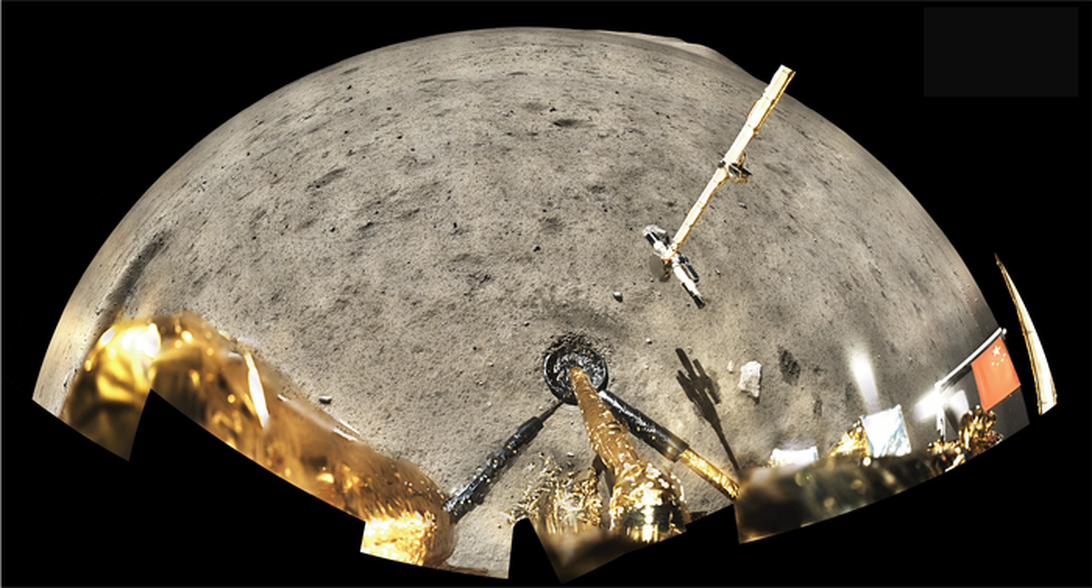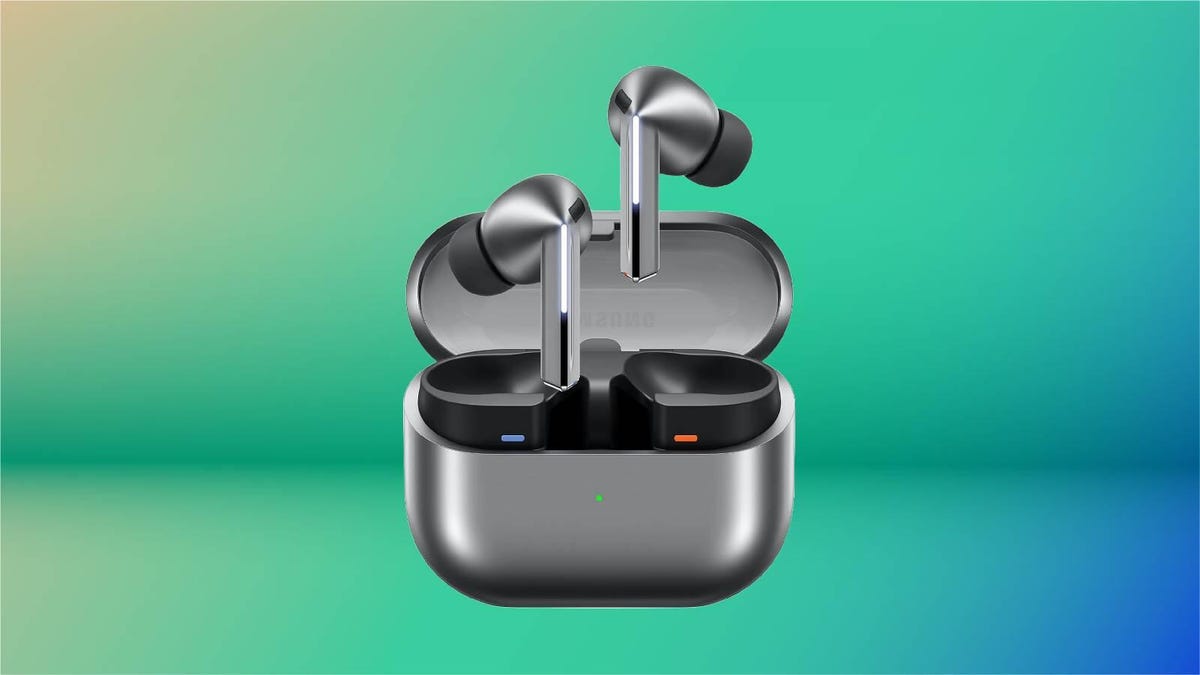Technologies
First moon samples in over 40 years may alter lunar history
«Our current views need readjustment» about how long our beloved white globe remained warm and volcanically active, says a researcher.

In late 2020, a Chinese space capsule delivered fresh moon samples to Earth for the first time in about four decades, and these precious lunar rocks just revealed a new detail about our planet’s glowing companion: Its volcanoes were alive and active considerably longer than scientists thought.
«All our experience tells us that the moon should be cold and dead 2 billion years ago. But it is not, and the question is, ‘Why?'» said Alexander Nemchin, a professor of Geology at Australia’s Curtin University and author of the analysis published Thursday in the journal Science.
Alongside an expansive and international team of researchers, Nemchin discovered that some of the newly transported moon rocks contain lunar fragments from later days of the white orb’s timeline. Dated about two eons ago, these fragments are relatively young. But here’s the kicker: Those same pieces are also remnants of a volcanic eruption.
Connecting the dots, the team members realized they were looking at solid confirmation that the lunar surface was alive pretty late in the game.
«We need to dig deeper with this,» Nemchin remarked. «We are highlighting that our current views need readjustment — further research will tell how dramatic this readjustment should be.»
Welcome back, lunar research
The saga began last year in December, when China’s Chang’e 5 mission sent a spacecraft to scrape the surface of the moon and collect a variety of rock and dust samples for Earth-based analysis. It returned with about 4 pounds (2 kilograms) of extraterrestrial material.
The year 1976 marks the last time lunar samples were brought down to our home planet, an achievement of the Soviet Union’s Luna 24 mission. But before that, NASA’s Apollo missions were running the course from Earth to the moon several times — the crusades returned photographs, moon rocks and personal anecdotes of astronauts.
«There was some need and drive to do this 50 years back,» Nemchin explained. «Then, priorities changed and everybody moved to something else.» But now, he says, «we have the moon back in the focus.»
He notes lunar research is important not only from an astronomy perspective, but also because any effort to travel to the moon — or really, any space exploration — tends to expedite technologies that ultimately benefit us on Earth.
One example of such serendipitous tech comes from Australian physicists’ research in the ’90s. They developed a highly complex mathematical tool hoping to detect smeared signals of black holes that vanished in the cosmos. Unfortunately, they never found any — but their invention paved the way for modern-day Wi-Fi.
Moon rock science
«Every new sample gives us a big boost in understanding what is happening, simply because we still have so few of them,» Nemchin remarked. «Apollo samples have been worked on for the last 50 years and are still actively investigated.»
While analyzing the rocks brought back by Chang’e 5, Nemchin and fellow researchers first checked out what types were present. In particular, they were after basalt fragments, which are correlated with volcanic activity.
«We needed to get an idea about chemical composition of the fragments to be able to compare [them] to the large basaltic field visible from the orbit,» he said. «And, make sure [those] fragments represent this field of basalts and do not come from somewhere else.»
Then, the scientists confirmed specific ages of the pieces of interest. Validating that these fragments are young was one of the main goals of the mission. That’s how the team members expected to prove their hypothesis of the moon having active volcanoes more recently than textbooks suggest.
«All basalts we had before are older than 3 billion years,» Nemchin said. «We also had a few very young points determined from material ejected by very young impacts — impact melts — but nothing in between. Now we have a point right in the middle of the gap.»
Such age determinations are called crater counting, something the team hopes to continue doing in the future in order to attain the full array of rocks to map out each generation of the moon. Nemchin also notes that a few interesting chemical features were found in the basalt samples, including high iron content, which isn’t present in any other retrieved pieces of the lunar surface.
Further chemical research on the rocks, he says, will help answer new questions introduced by the team’s novel findings, such as searching for the source of heat that led to lunar volcanic activity a couple of billion years ago.
And at the end of the day, the Australian geologist emphasizes that «what is important for me in all this is that we managed to bring a large international group of people to work on the sample.»
«Somehow,» he added, «In the current situation when international travel is still rather restricted, I had more interaction with different people than in the previous years when we could move around any way we liked.»
Technologies
This $199 Bose QuietComfort Headphones Deal Is the Best I’ve Seen
With a $150 discount, this Bose QuietComfort headphones deal is impossible to beat.

We’re big fans of personal audio gear, especially high-quality headphones. The Bose QuietComfort headphones definitely fall into that category. In fact, CNET’s expert editors rank them as some of the best noise-canceling headphones on the market today. But that doesn’t mean you have to pay the retail price — right now, both Amazon and Walmart are offering them for a best-ever price.
Strike now and you’ll snag a pair of Bose QuietComfort wireless headphones at a great discount of $150. Walmart is offering them for just $199 in select colors. But if you want more variety, Amazon is price-matching across the entire color range. Just keep in mind that I can’t promise that either of these deals will last for long.
The QuietComfort headphones include noise cancellation and have Quiet and Aware modes, so you can focus as needed or let some ambient sound in when you’re taking walks or need to know what’s happening around you.
Hey, did you know? CNET Deals texts are free, easy and save you money.
Adjustable EQ lets you customize your sound preferences, and a battery life of up to 24 hours makes these headphones the perfect travel companion. Need a battery boost? It only takes a 15-minute charge to get an extra battery life of up to 2.5 hours.
If this isn’t quite the product you’re looking for, check out our list of the best wireless headphones to find the right pair for you. There are plenty of different options from various manufacturers, with something for everyone.
HEADPHONE DEALS OF THE WEEK
-
$300 (save $51)
-
$299 (save $151)
-
$220 (save $180)
Why this deal matters
Bose makes some of the best headphones on the market. This deal offers QuietComfort headphones for just $199 after slashing $150 off the regular price. That’s the lowest price I’ve seen on these headphones, and a massive discount. Just be sure to get your order in soon.
Join Our Daily Deals Text Group!
Get hand-picked deals from CNET shopping experts straight to your phone.
By signing up, you confirm you are 16+ and agree to receive recurring marketing messages at the phone number provided. Consent is not a condition of purchase. Reply STOP to unsubscribe. Msg & data rates may apply. View our Privacy Policy and Terms of Use.
Technologies
The Best Earbuds for Samsung Users Are Just $165, but for How Long?
The Samsung Galaxy Buds 3 look and sound great, and this deal smashes the usual $250 asking price.

While it’s true that Apple’s latest AirPods Pro 3 tend to dominate the conversation when discussing premium Bluetooth earbuds, they aren’t the only option. In fact, if you’re ensconced in Samsung’s ecosystem, they’re obviously not going to be a great fit. The solution? Samsung’s Galaxy Buds 3 Pro, which you can get on sale right now for just $165 on Amazon.
It isn’t quite the cheapest price we’ve seen, but it isn’t all that far off. And while they might fall slightly during the upcoming Black Friday sales, we don’t expect them to go far beyond their lowest price of around $150.
There are plenty of options out there for non-Apple users looking for a good pair of wireless earbuds. To give you one example, CNET’s own list of the best wireless earbuds named Sony’s WF-1000XM5 as the best pair on the market. Elsewhere on that list, though, CNET also named the Galaxy Buds 3 Pro as the best option for Samsung users, and it’s not hard to see why.
Hey, did you know? CNET Deals texts are free, easy and save you money.
These earbuds boast a number of features tailored to folks with Samsung Galaxy or any other sort of Android smartphone, most notably support for the «high-resolution» Samsung Seamless Codec for audio quality. Those users will also have access to the Galaxy Wear app, which is the exclusive method the company uses to push through updates. While you can technically connect these buds to an iPhone, you won’t find the Wear app in Apple’s App Store, leaving the experience far from ideal.
Beyond those exclusive perks for Android users, CNET’s audio guru Dave Carnoy said in his review of the Galaxy Buds 3 Pro that you can expect a «lightweight and comfortable» feel, excellent audio and call quality, and some solid noise-cancellation to boot. The primary flaw he noted was the price, which this deal definitely helps with.
Why this deal matters
The Galaxy Buds 3 Pro are the top-of-the-line when it comes to Samsung earbuds, which means that most of the time you can expect a top-of-the-line price tag to match. Now, however, you can grab yourself a pair for considerably less.
Technologies
Today’s NYT Mini Crossword Answers for Friday, Oct. 31
Here are the answers for The New York Times Mini Crossword for Oct. 31.

Looking for the most recent Mini Crossword answer? Click here for today’s Mini Crossword hints, as well as our daily answers and hints for The New York Times Wordle, Strands, Connections and Connections: Sports Edition puzzles.
Happy Halloween! Today’s NYT Mini Crossword features the word «BOO!» in a square on the last line of the grid. That’s not just a Halloween greeting, it’s part of the answer that spans both 9-Across and 10-Across, so read the answers to both those with the «boo» in the middle to solve it. And then, the puzzle-makers use that «BOO!» again, to help make the answer to 3-Down. Read on for all the answers, complete with added boos. And if you could use some hints and guidance for daily solving, check out our Mini Crossword tips.
If you’re looking for today’s Wordle, Connections, Connections: Sports Edition and Strands answers, you can visit CNET’s NYT puzzle hints page.
Read more: Tips and Tricks for Solving The New York Times Mini Crossword
Let’s get to those Mini Crossword clues and answers.
Mini across clues and answers
1A clue: Buffalo hockey player
Answer: SABRE
6A clue: «I’ll have the ___» (frequent customer’s order)
Answer: USUAL
7A clue: Contents of a volcano
Answer: MAGMA
8A clue: Adjust to a new environment
Answer: ADAPT
9A clue: With 10-Across, last car on a train
Answer: CA
10A clue: See 9-Across
Answer: SE
(The «Boo!» shown in the grid helps make the word CABOOSE)
Mini down clues and answers
1D clue: «Poison» shrub
Answer: SUMAC
2D clue: Carne ___
Answer: ASADA
3D clue: Imaginary cause of fear
Answer: BUGA
(The «Boo!» shown in the grid helps make the word BUGABOO)
4D clue: Accessible alternatives to staircases
Answer: RAMPS
5D clue: Make extremely happy
Answer: ELATE
-

 Technologies3 года ago
Technologies3 года agoTech Companies Need to Be Held Accountable for Security, Experts Say
-

 Technologies3 года ago
Technologies3 года agoBest Handheld Game Console in 2023
-

 Technologies3 года ago
Technologies3 года agoTighten Up Your VR Game With the Best Head Straps for Quest 2
-

 Technologies4 года ago
Technologies4 года agoVerum, Wickr and Threema: next generation secured messengers
-

 Technologies4 года ago
Technologies4 года agoBlack Friday 2021: The best deals on TVs, headphones, kitchenware, and more
-

 Technologies4 года ago
Technologies4 года agoGoogle to require vaccinations as Silicon Valley rethinks return-to-office policies
-

 Technologies4 года ago
Technologies4 года agoOlivia Harlan Dekker for Verum Messenger
-

 Technologies4 года ago
Technologies4 года agoiPhone 13 event: How to watch Apple’s big announcement tomorrow
